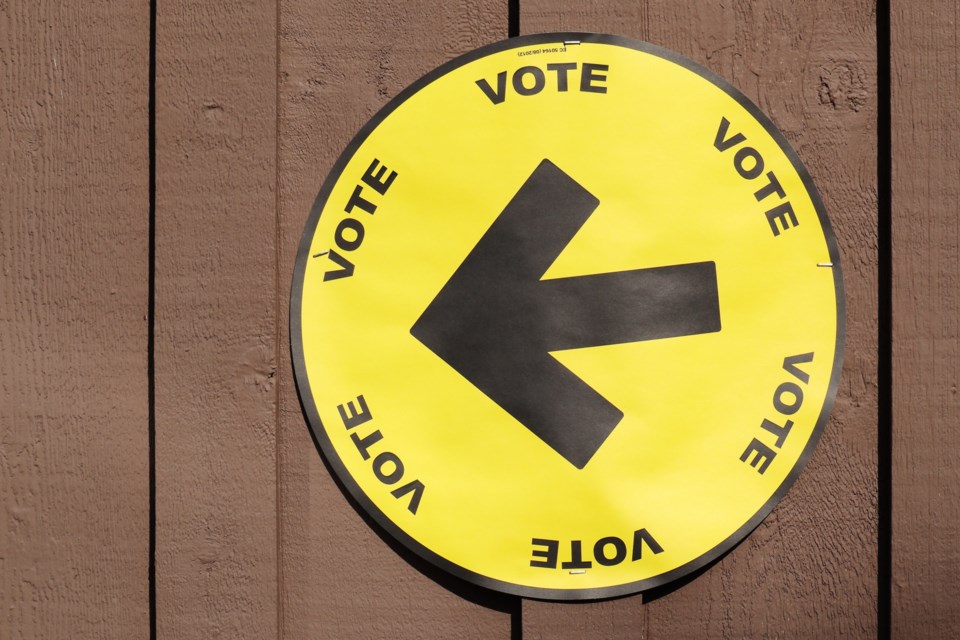B.C.’s Chief Electoral Officer wasted no time in a new report pointing out just how extraordinary it was to hold a snap pandemic election last October.
“It was our province’s first election held during a pandemic, our first unscheduled election since 2001, and the first time more voters voted at advance voting and by mail than on General Voting Day,” wrote Anton Boegman, in his final report into the election, released July 27.
“It was also the most challenging election that Elections BC has ever administered.”
The summary report makes clear a major part of the problem was Elections BC didn’t have any special insight into whether Premier John Horgan was serious about sending the province to the polls during COVID-19.
The non-partisan elections agency had been spending almost $7 million a year to stay in a state of readiness since the BC NDP formed a minority government with the partnership of the BC Greens after the 2017 election, because, like the rest of us, it wasn’t sure when the grand experiment in government-by-cooperation would end.
Elections BC went to “high” readiness in July 2020 amid growing media speculation that Horgan was considering a snap election to take advantage of then relatively small COVID-19 case counts, as well as the fact the BC Greens were just finishing a leadership race, and the BC Liberals seemed lost and disorganized.
When Horgan pulled the pin on Sept. 21, some people were still in denial it was going to happen at all.
Thankfully, Elections BC hedged its bets, buying up the required hand sanitizer, masks, barriers and other pandemic equipment necessary to run an actual election during an unprecedented health crisis.
It was a bizarre 33-day campaign, with parties forbidden from holding big rallies or mass gatherings, and in many cases substituting virtual meetings for door knocking in neighbourhoods.
The fear and anxiety of COVID-19 also led to an unprecedented shift in voter behaviour.
“The largest change in voter behaviour in 2020 was the massive increase in voters who chose to vote by mail,” read the report.
“A record 724,279 voters requested vote-by-mail packages, and 604,111 packages were returned by the close of voting, representing 83.4% of vote-by mail packages issued.
“In the 2017 provincial election only 6,669 vote-by-mail packages were returned by the deadline.”
To put it another way: Only 0.3 per cent of votes cast in 2017 were done by mail, compared to 31.4 per cent in 2020.
“This was the first election in B.C. in which more voters voted before General Voting Day than on General Voting Day,” reads the report.
It was also the lowest physical turnout on voting day in B.C. history, as voters tried everything to avoid having to stand in line in a crowd during a pandemic. The percentage of votes cast in person dropped by more than half.
Advance voting grew as well, reflecting a trend B.C. has seen in several elections, as many voters prefer to go early and skip the rush.
Still, the added convenience of extra advanced voting days and mail-in ballot options was not enough to boost voter turnout during one of the most frightening times in B.C.’s history.
Overall voter turnout dropped to 53.9 per cent, from 61.2 per cent in 2017, making it one of the least engaged elections in recent history.
The demographics of who votes and doesn’t also persisted, throwing cold water on next-generation activists who insist the youth vote will one day show up and change the world. Maybe. But it hasn’t happened yet.
Instead, 39 per cent of voters aged 25-34 actually bothered to cast a ballot, compared to 69.7 per cent aged 65-74. Is it any wonder why governments focus on fulfilling promises for seniors? They show up.
All of the extra health measures and short notice came at a cost to taxpayers.
Elections BC spent $51.6 million to hold the 2020 election. It cited all the gloves, barriers, sanitizers, and protective equipment required, but also the high cost of rent for polling stations in Metro Vancouver, as well as the need to pay staff more due to increases in BC’s minimum wage.
It was far more expensive than the 2017 election, which cost $39.5 million.
If you think of it in a per-vote cost, it was $14.64 for every vote in 2020, versus $12.15 per vote in 2017.
Elections BC takes its sweet time issuing final reports after elections, because it goes through and double-checks all its ballots and expenses and statistical reports into how voters exercised their democratic rights.
The agency doesn’t get into the ruthless political calculations exercised by the BC NDP to call an election when the public was at its most distracted, and its opponents weakened.
Nor does it talk about the betrayal of the confidence and supply agreement with the BC Greens, and subsequent attempt to wipe the party’s former friends off the electoral map with extreme prejudice.
That’s a different kind of summary of the 2020 BC election. Though it’s just as valid as all the numbers, facts and figures in Elections BC’s final report.
Rob Shaw has spent more than 13 years covering BC politics, now reporting for CHEK News and writing for The Orca. He is the co-author of the national best-selling book A Matter of Confidence, and a regular guest on CBC Radio.
SWIM ON:
- Rob Shaw: For four years, John Horgan’s government was constrained by crises and a minority government. Later this year, we may start to get a clearer picture of just what he wants to do.
- In January of last year, Maclean Kay wondered if it would be an election year. (He said no.)
- The immediate aftermath (and math after) of the election is obviously still relevant today.



